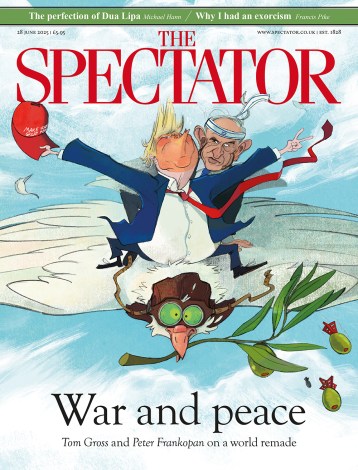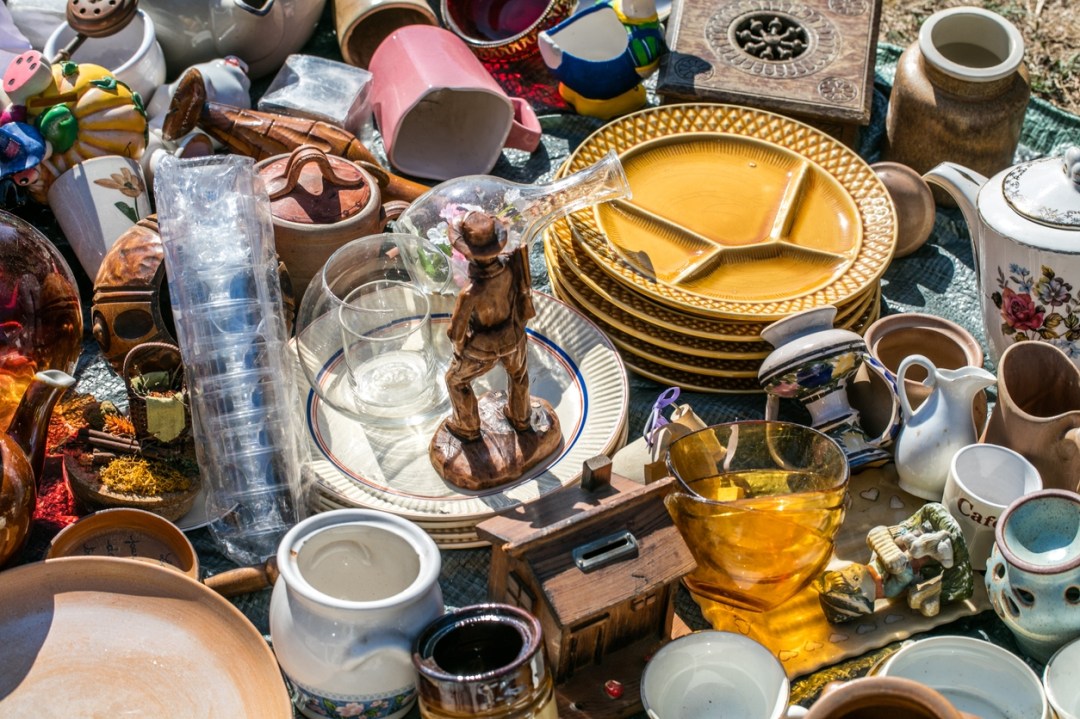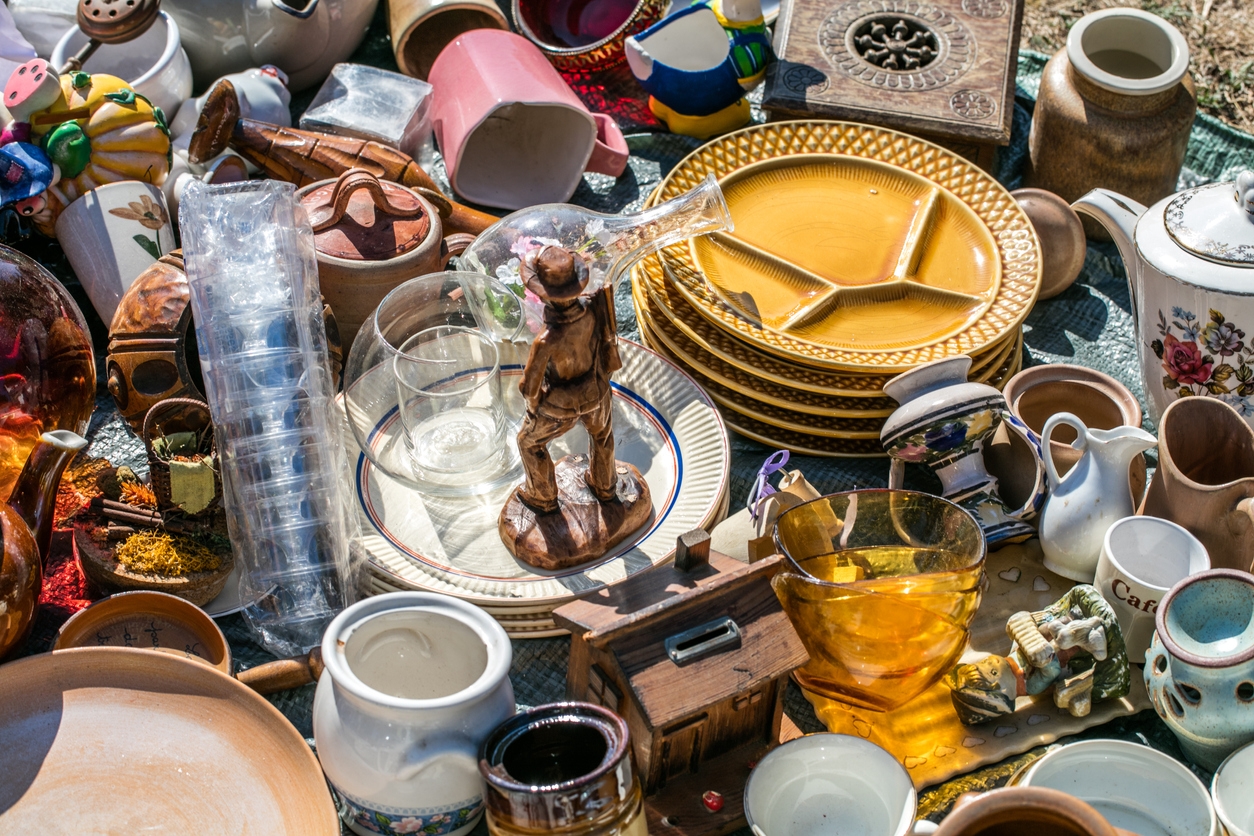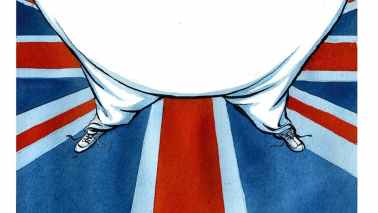In Mary McCarthy’s 1954 novel The Group, Mr Andrews describes the contents of a charity shop (or thrift store if you hail from the States) as an ‘instructive inventory of the passé’. And indeed, all charity shops are repositories of the recent past – a perfect distillation of expended trends and fashions. Worthy of an anthropologist’s eye, charity shops are living museums; rail after rail of cultural history infused with the faint smell of other people’s washing detergent and mothballs. But Mr Andrews missed one vital point: charity shops are not simply about the past. They are also caverns of possibility, where formerly prized objects become affordable, and where the taste of the customer reins supreme.
There is no type of shop quite like it. As a novelist’s daughter, I have spent a great many hours waiting for my mother to finish leafing through the bookshelves of the Oxfam bookshop on Turl Street and the hot sting of shame when one of her novels was discovered priced at 10p.
Fast forward thirty years and my own daughter can attest to the many hours she has been forced to spend in charity shops while I rummage through rails of clothes and shelves of books, promising her a toy from the children’s shelf for good behaviour. In the early days of grief, uncertain what to wear to my father’s funeral, I found myself in a British Heart Foundation charity shop in Battersea on a cold January morning. To buy something new felt altogether wrong and flippant since I never expected to wear it ever again. Instead, I unearthed a grey Chanel dress, its slightly threadbare edges the sartorial equivalent of an old friend. Last year, I bade my farewells and gave the dress to another charity shop, ready for its next incarnation.
Such anecdotes are the patchwork of a life on the rummage. But I am not alone. In this country charity shops are a cultural institution, as much a part of any High Street – from Kensington to Keele – as a Greggs or a Post Office. They are also social barometers; in the years following the financial crash of 2007, charity shops registered a thirty per cent rise in spending as shoppers sought to tighten their belts. In this, our second pandemic year, charity shops are once again a social and cultural bellwether. In a recent economic report issued by Nationwide, it is revealed that charity shop spending since the April re-opening has increased by sixteen per cent, dwarfing consumer activity in department stores. Take that, John Lewis, and your ludicrously expensive lampshades.
Of course, it is not simply spending in charity shops that has increased since we were all locked up with nothing better to do than clear out the attic. Donations to charity shops have increased exponentially with many shops declaring that they can take no more bulging bin bags of ‘treasure’.
In my local Helen & Douglas House it is not unusual to see a scuffle outside between potential donors, each trying to offload their wares guerilla style, and make a break for it before the Stasi spot them. On which note, Marie Kondo, high priestess of minimalism, is also to blame for the huge surge in donations as the aesthetic du jour is less Victoriana and more Scandinavian understatement. In my case, any potential gains made by clearing out the eaves are annulled by the one off “bargain” purchases: a wicker chair, a Spode jug, and, my husband’s absolute bete noire, the collection of chipped Peter Rabbit mugs.
And so, even in the age of shopping at the touch of a button, it turns out that the Great British Public still crave an element of surprise on a wet afternoon. But will a die-hard charity shop maven such as myself give away my preferred shops? Read any feature in the Times or Vogue and they’ll tell you that the best ones are in Chelsea or Primrose Hill, places where the ‘feeder demographic’ is all celebrities and rich housewives. All well and good if you’re prepared to spend hundreds of pounds, but I prefer to unearth my treasures amongst the chipped china, obsolete household electrical and stacks of Danielle Steele novels, places where a gem has slipped in unknown among the bric a brac.
The charity shop gives free rein to our whims and fancies; unlike other high street stalwarts which tend to impose their aesthetic on customers, they are blissfully uncurated. What is deemed valuable or beautiful or useful lies entirely at the discretion of the shopper. What objects would you gravitate towards if left completely to your own devices? Truly, the answer lies in your local Sue Ryder.







Comments